18.02.2019
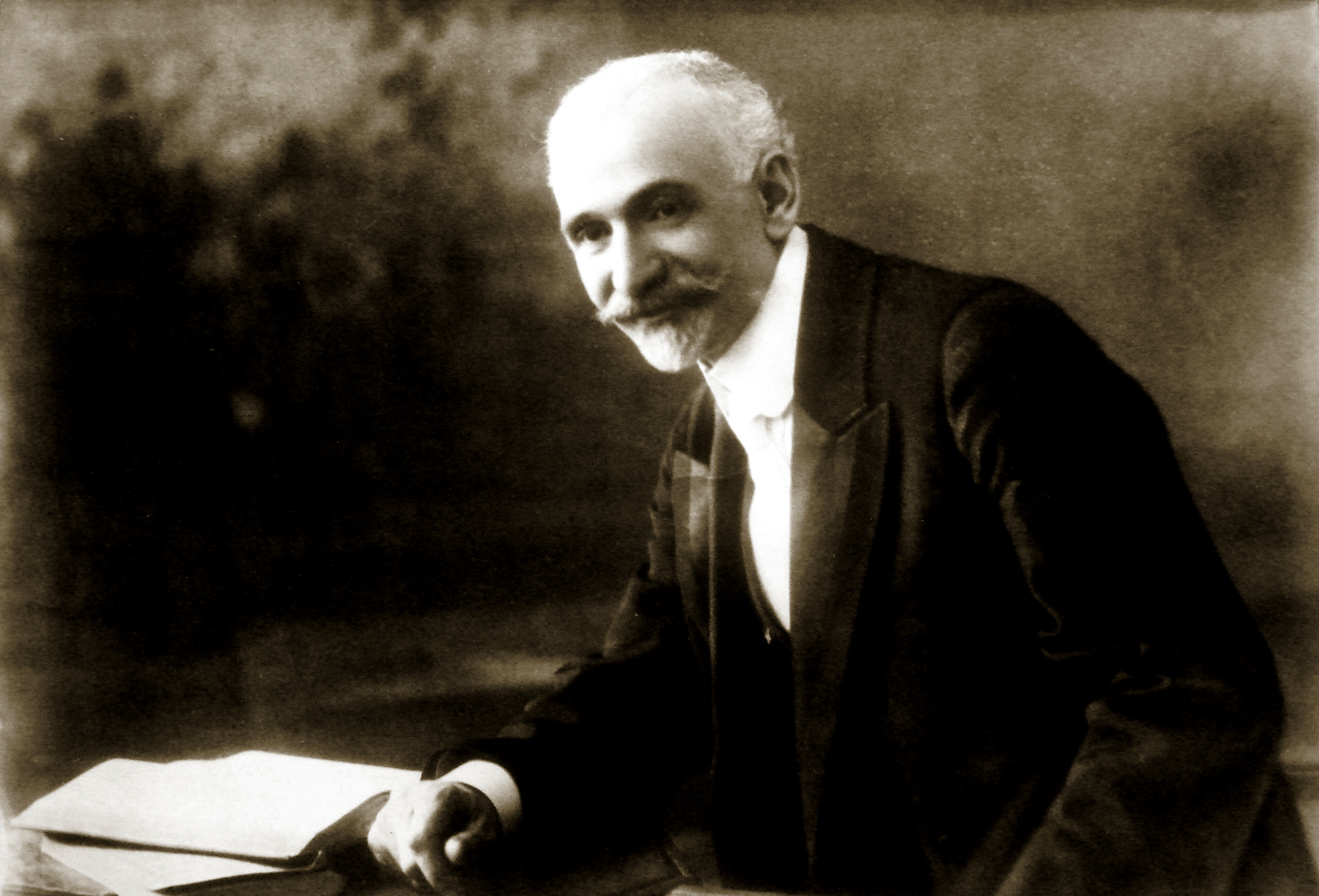
The destiny of the Armenian nation has left a deep trace on the biography of Armenian writers, cultural figures and intellectuals in general.
Hovhannes Tumanyan was one of those farsighted intellectuals, who selflessly devoted himself to his people during the Armenian Genocide and a fair solution of its issue.
The poet of all-Armenians, as he is called, was born on 7 February 1869 (19 according to the new calendar), in the village of Dsegh, in Lori region. Lori or Gugark world, as it was called in the past, is one of the most charming places of historical Armenia. As for Avetik Isahakyan;
“Lori is a patriarchal self-contained world; each corner of it is a traditional novel and each stone tells about its heroic past”.
Hovhannes Tumanyan lived his childhood in this beautiful nature.
According to a tribal tradition, Tumanyans are the descendants of Mamikonyans, who had lived in Lori. There are preserved documents on this. Tumanyan also considerd himself a descendant of Mamikonyans and some of his letters written in 80-90’s have a seal, which reads “Hovhannes Tumanyan Mamikonyan”.
Tumanyan had a big family. His four sons and six daughters were educated and intellectual people, and have reflected their father's talent to some extent. H. Tumanyan has never received strict regular education. He preliminary learned the letters from his father. In the age of eight, along with a group of village children, he learned reading and writing at his old aged uncle’s newly opened “school”, where the pencils were made of tin and ink from poppy flower, and all these were prepared by the students. After studying over there for a few months, in 1877 he begins to attend the newly opened school in the village, which is described in his own “Autobiography” in a quite figurative way:
“The school was of Ter-Todikyan style, where pedagogical methods used were beating, insults, in return of a small amount of knowledge”.
In 1879, Tumanyan’s father Tadevos took his son to Echmiadzin to continue his education at Gevorgyan Seminary, but seeing the sallow faces of the students, he took his son back to the village. In the autumn of the same year, father Tadevos hears about the new school in Jalaloghlu /now Stepanavan/ where Hovhannes and his younger brother were taken to continue their study. The school inspector Tigran Ter-Davtyan, who was one of the intellectuals of the time, was a friend of their father. At the beginning Hovhannes lived in the teacher’s house, and enjoys its rich library.
In September 1883, Tumanyan was in Tbilisi, which was a great cultural center and was well-known by its Armenian schools and cultural centers. Tumanyan was accepted to Nersisyan School at the second grade. The study lasted for about three years, during which he acquired rich knowledge, especially in the field of humanities. Some of the well-known intellectuals of the time such as, novelist Tserents (H. Shishmanian), C. Barkhudaryan (Sheller’s translator), philologist K. Kostanyan, renowned translator and educator P. Vardanyan, and many other famous figures were Tumanyan’s teachers. The famous works “Verk Hayastani” by Kh. Abovyan, “Samvel” by Raffi, and artistic works and articles of M. Nalbandyan, had played an important role in the formation of the young poet's views.
“Vernatun” (The Loft) literary group was founded in Tumanyan’s house, where famous figures, such as, Aghayan, Proshyan, Komitas, Papazyan and others met.
Tumanyan's national and orphan-care work has a special place in our history.
Tumanyan’s activities during the genocide were remarkable. It is exceptional and unique not only for the Armenian culture, but also in a world history. Such examples of self-sacrifice are rare in our history. He had consciously risked his own life, devoting himself to the destiny of his nation, sharing every bitter experience of his people with his whole family. Tumanyan was connected to the Armenian historical fate with his entire inner world.
In 1903, Armenian schools got closed, Armenian Church properties were seized, and armed clashes outflowed. Already in 1905-1907 the first Russian Revolution, as well as Armenian-Turkish bloody clashes outbroke.
Here Tumanyan personally participated in the disposition of Armenian people’s fate. He took on the role of reconciling the peoples standing against each other, went out into the arena with a weapon in his hand. As he wrote in his diaries:
“… How you could laugh when you see me on the mountains, armed from head to foot, hundreds of horsemen and with white flag”.
In December 1908, on charges of anti-government activities Tumanyan was put in the Metekhi prison. This was a response to his honest and selfless activity during the Armenian-Turkish clashes. As we read in one of his letters:
“This has been the case in the world, the good is punished, even more…” . Ironically his 40th birthday was marked when in the prison; on this occasion he wrote the poem “Vayrejk” (Landing). One of the most derisive and saddest pages of the Armenian literature “Mi Katil Meghr” (A Drop of Honey) was also created in the prison.
After many years the wise and noble perceptions of the poet turned to be his quartet.
After spending seven months in the prison he was freed on bail until a trial. However, in November 1911, he was again arrested.
In 1914, when World War I outbreak, more awful and hellish times were waiting the Armenian nation and its poet. In those days, Tumanyan was in Tsaghver, along with his family and closed ones. He immediately returned to Tbilisi and becomes a member of “War Victims Relief Committee” created in October 1914, which carried on wide variety of activities with the participation of cultural and religious figures.
In 1914-1915 the entire social activities of Tumanyan are linked to the mentioned committee. Long before the war Tumanyan had wrote the following lines:
“And he; Turkey, appealed, appealed and will appeal to the most monstrous means to put an end to the Armenian people, the Armenian issue, their homeland and close the issue of national rights permanently”.
Unfortunately, he was right. Tumanyan was one of the rare national figures who had been in the battlefield, and along with his friend he turned around the war area.
All-Armenians poet had been in Eastern Armenia twice; in 1914 and 1915. He witnessed the Genocide. During those years he used to keep a diary, which has a primary importance.
The image of the hard years revives in those diaries:
“Massacres, testimonies of Turkish cruelty, destiny of Armenian orphans. And all of these reflected in the thoughts of young Armenian fellow, who was concerned about the future of the homeland”.
When the news of massacres arrived in Tbilisi in 1915, Tumanyan was the first to write a call to the Armenian Writers Union and inform them about the massacres. As a flashy character, Tumanyan was so thrilled to the extent, that in 10 May he published his article “Van and Yerevan”. The great optimist thinks that everything was resolved in the favor of Armenians.
It was in 23 July, when the bad news comes to Tumanyn, who was exhausted and sick; Van was surrendered to the enemy and the huge numbers of migrants took their way to Echmiadzin and Igdir.
In 1915 he wrote the poem “Hayrenikis Het” (With My Homeland). Who could understand in 1915; my new homeland, my powerful homeland, mentioned in his poem? In those years, curse sounded from everyone's lips, gloom prevailed, but Tumanyan wrote:
“And poets, who have not defiled their lips with a curse, will praise your new life with new songs, new words”.
He should have been there, where his Armenian people were. On 30 July, along with his daughter he was in Echmadzin.
Without losing time, without sleeping or any rest, he was engaged in a work of providing shelter for the migrants, taking care of the orphans and providing them with food. 5 hospitals were opened under his direct leadership, with 500 beds, and an orphanage for 3000 orphans. Tumanyn had a special care for the sick Armenian orphans. In his diaries Tumanyan indicates, that only those orphans who had their parents visiting them were getting ill, that is, the infection penetrated from the outside:
“Cases of the disease in children occur almost exclusively in those who had parents visiting them… orphans have no disease”.
No one could better ever present the nightmare days of Tumanyan as he himself presented in his writings “Echmiadzin pocketbook”, “Memories from Echmiadzin Orphanage” publication and a letter by Zapel Yesayan, and memories of Vahan Totovents, Nvard Yegibyan Paghtasaryan and Nvard Tumanyan.
“It was death-place at Echmiadzin at that time. Genius Saryan, who brought financial aid to Echmiadzin, after being over there for few minutes, had been faint down”.
Some orphans used to call him father. Tumanyan writes:
“Some children were studying very well, that after the meal they catch my hinges (though they are dressed, sheltered and fed) and used to tell me, father I am an orphan, I have no mother nor father”. “…when they were told that new cloths will be sewed for them, they used to raise their heads from here and there and say: - Father, sew a red hat for me”.
The memories of Nvard Tumanyan are very remarkable:
“It was the night of August 19. The unforgettable heavy night of the Ararat Valley… My father with a black cloak, the cap on his head, hurried out of the room to shelter the migrants in the buildings, he was running point to point, from one tent to the other… from one dead to the other. He was managing, commanding, cursing, reprimanding, smiling, stroking and getting angry. One day, under a heavy rain, he ran and forcibly, opened the newly-build pontifical residence, which had previously been inviolable. The immigrants were filled in. Angry Catholicos reproves the poet, saying: You know that I am the Catholicos of All Armenians … Tumanyan answers: Do you know that I am the Poet of All Armenians.
This is perhaps the greatest appreciation, which the poet was unwillingly exalted himself. And All-Armenian poet had the great moral right to read the requiem of his people, as he had dedicated one of his poems to the souls of the innocent victims.
In a letter to Zapel Yesayan, we read:
“… a heavy grief continually suppresses my heart. Much has fallen to me in the world, and the world is full of pain now. Lot of things I do not like now, others which I like, I cannot see them now. For example, since the day when I saw my mother on the killed body of my brother, and we hide my other killed brother from my mother, I am not able now to see my mother”.
Tumanyan remembers with gratitude the work of Armenian women devoted to the orphanage with infinite loyalty:
“…I remember the dense and long rows of children skeletons, when they were sat down by the ladies, who were like liberation spirits constantly turning round, clothed in white, paled by the pain and the unbearable heavy air and the smell…”
Tumanyan’s daughter; Nvard was among those guarding angels, who ignored every difficulty devoting herself to the salvation of his people. Lines from her letter to her brother Ardik:
“Our father and I are preparing ourselves to go to Yerevan. One hundred and fifty-five orphans will be moved to Yerevan. There are forty-three nursling baby and nobody to take care of them. The refugees are already scattered; the number of orphans is getting increased… the seminary is turned to a hospital. Our father is satisfied… He is so tired, but cannot leave the work uncompleted”.
Tuamnyan’s children were all concerned with the fate of their nation. When the Russian troops were leaving, leaving the Armenians to the whim of fate, Andranik calls for military recruitment; each Armenian family must give a soldier to serve for the homeland. Tumanyan was one of the first to respond to his son’s call.
The poet had a great role in the work of a number of non-governmental organizations. During 1917-1918, “Patriotic Unions” were carrying on national activities in almost all Armenian provinces. Their main goal was to help refugees and victims of war; collect donations, conduct negotiations with different organizations for support.
In 21 November 1918, by the initiative of compatriotic unions in Tbilisi
“Investigative Committee on the loses of Armenian People in World War I” was created and H. Tumanyan was elected president for this committee. Under his leadership the committee performs a heroic job; enormous factual material was collected from thousands of looted and homeless Armenians. The documents were edited and provided to the Delegation of the Peace Conference convened in Paris.
In 23 March 1923, when the fatal moment was arrived he said to his children: “Get up…” This was the last word of the poet.
Tumanyan lived not as he wanted to, but as was dictated by the fate of his nation. He did everything he could, without knowing the limits of his capacity.
Kristine Najaryan
Head of Department of Educational Programs
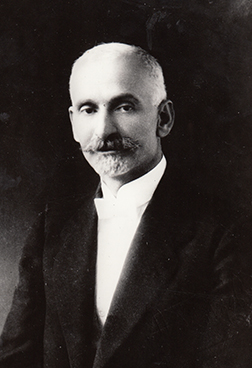
Hovhannes Tumanyan 1914
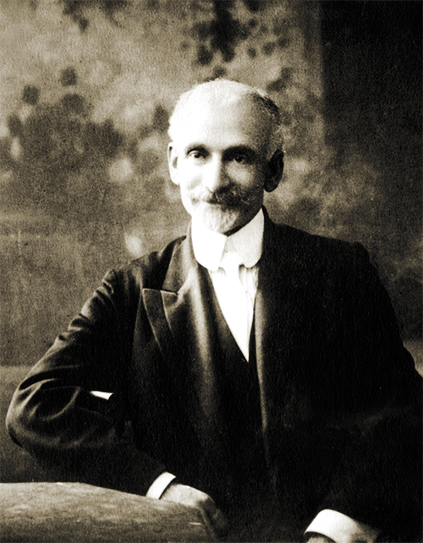
Hovhannes Tumanyan 1915

Hovhannes Tumanyan 1915
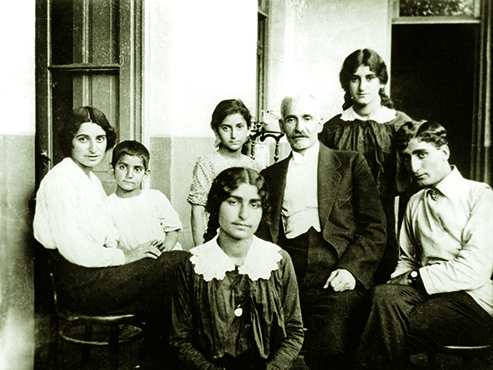
Tumanyan with his family, Tbilisi 1914
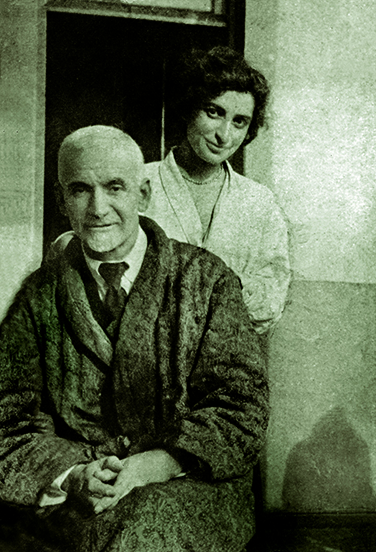
Tumanyan with his daughter Nvard, Tbilisi 1919
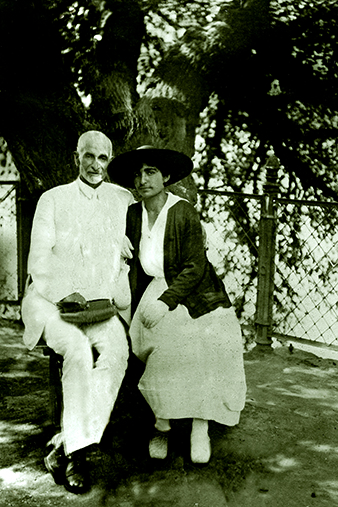
Tumanyan with his daughter Ashkhen
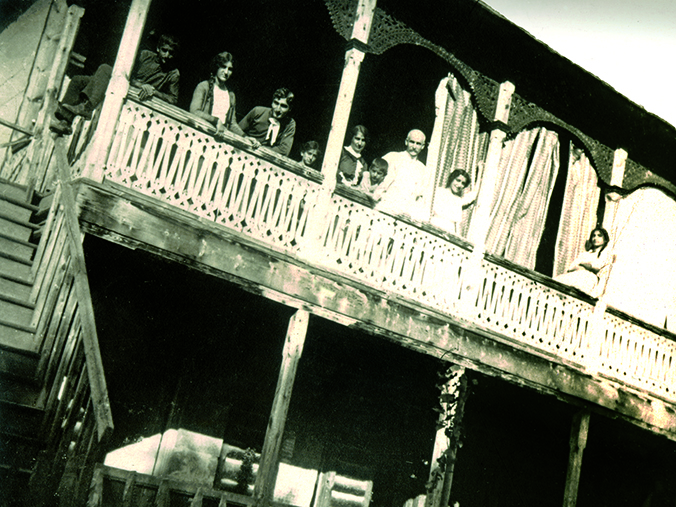
Tuanyan at Tsaghver, from left, Areg, Arpi, Hamlik, Seda, Olga, Tamar, Hov. Tumanyan, Nvard, Anush, 1914
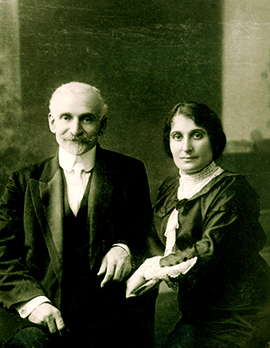
Tumanyan with his wife Olga, Tbilisi, 1915
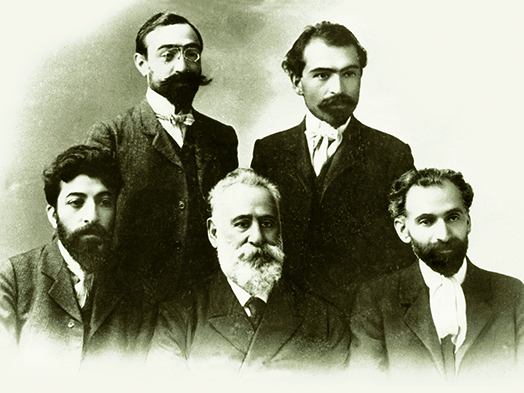
Members of the Loft: H. Tumanyan, Gh. Aghayan, A. Isahakyan, D. Demirjyan, Levon Shant, Tbilisi, 1903
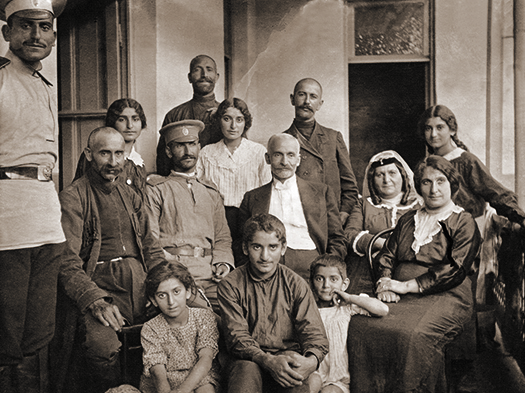
Tumanyan with members of his family, Tbilisi, 1914
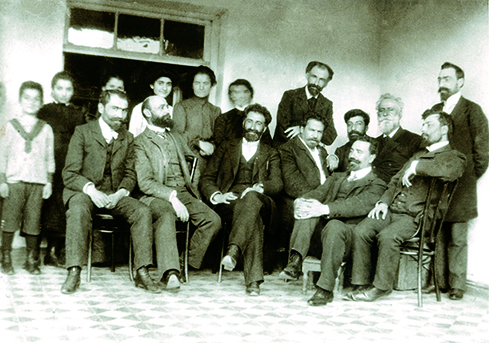
From right; N. Aghbalyan, Gh. Aghayan,
A. Isahakyan, R. Zargaryan,
F. Vardazaryan, N. Mare, S. Lisitsyan,
D. demirjian, standing;
Astavazd, Nvard, Areg, Mushegh, Hamlik, Tbilisi, 1915.
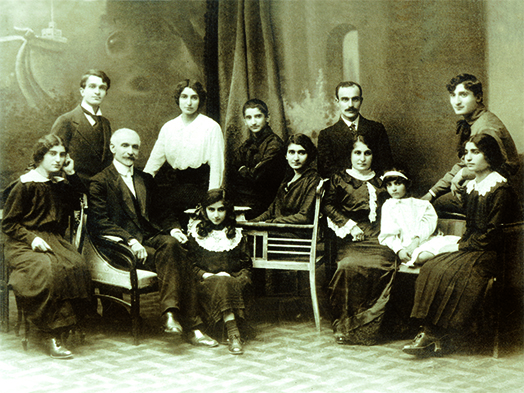
Tumanyan's family
Sitting from left; Arpik, Tumanyan, Seda, Ashkhen, Olga Tumanyan, Tamar, Anush
Standing; Artavazd, Nvard, Areg, Mushegh, Hamlik
Tbilisi, 1915
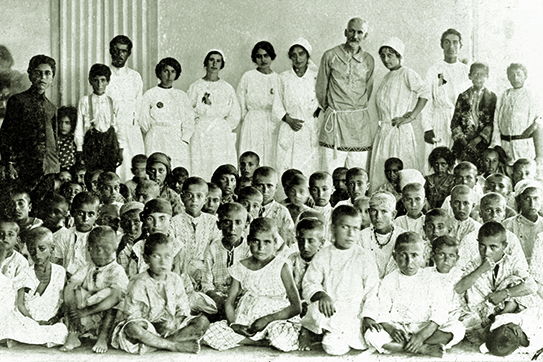
Tumanyan and his daughter Nvard with charity sisters and orphans, Echmadzin, 1915.
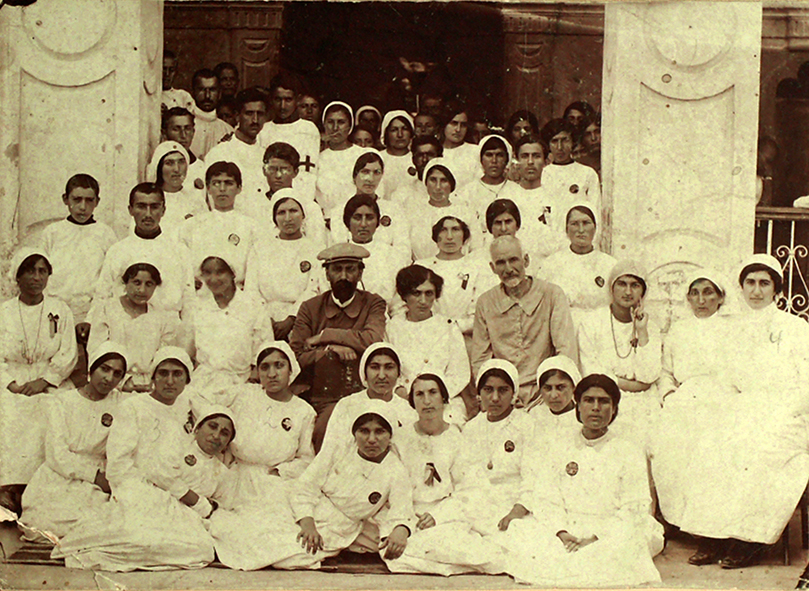
Tumanyan with charity sisters, Echmadzin, 1915
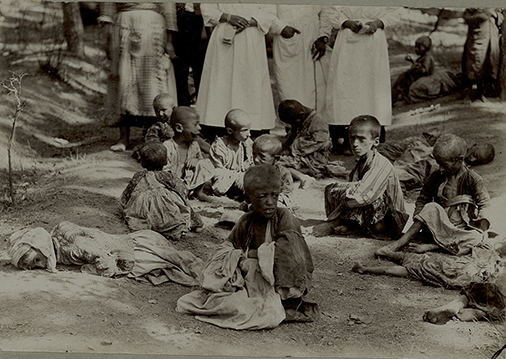
Echmadzin, 1915
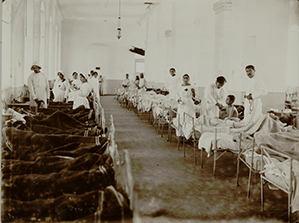
Echmadzin, 1915
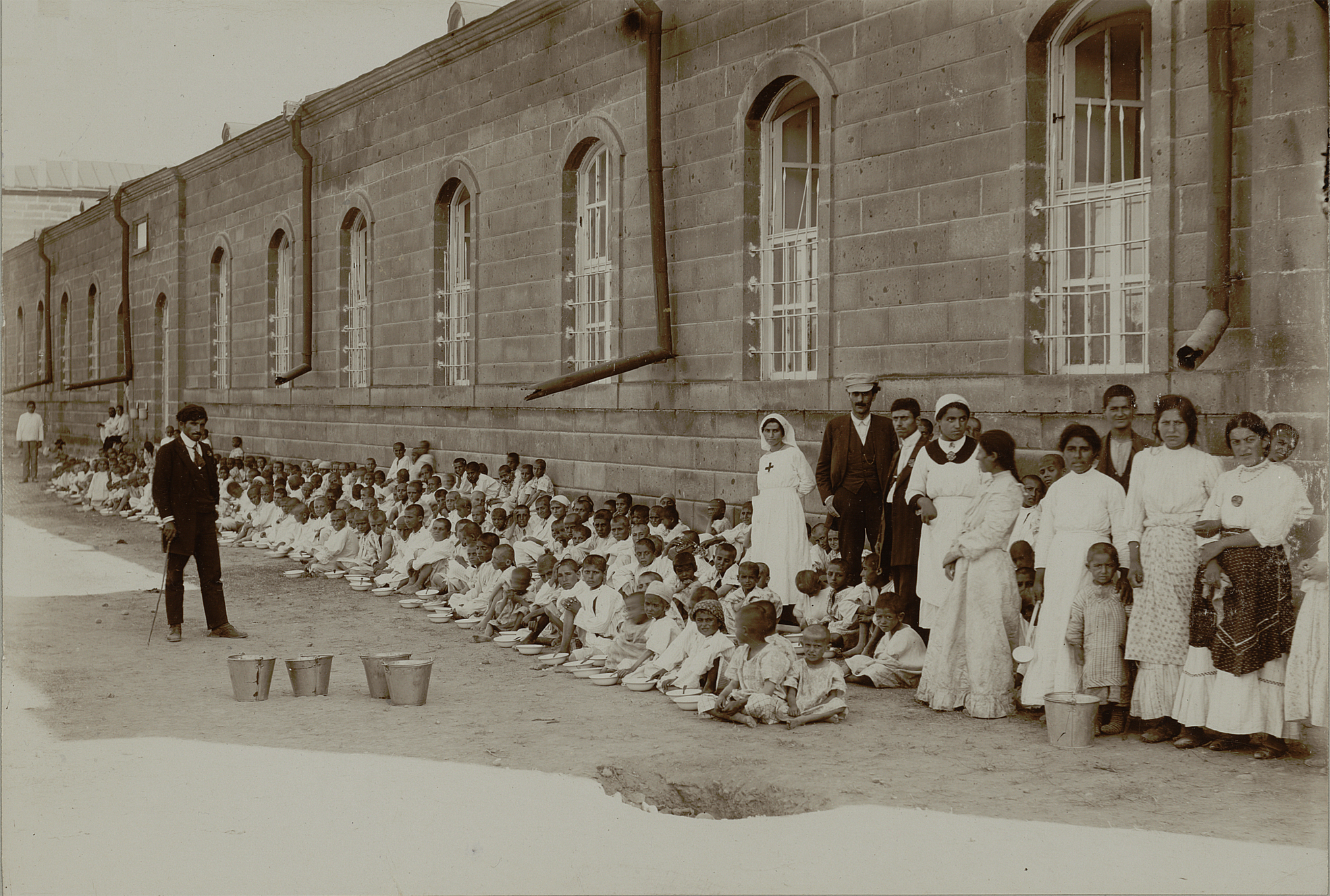
Orphans who have survived the Genocide and charity sisters, Echmadzin, 1915
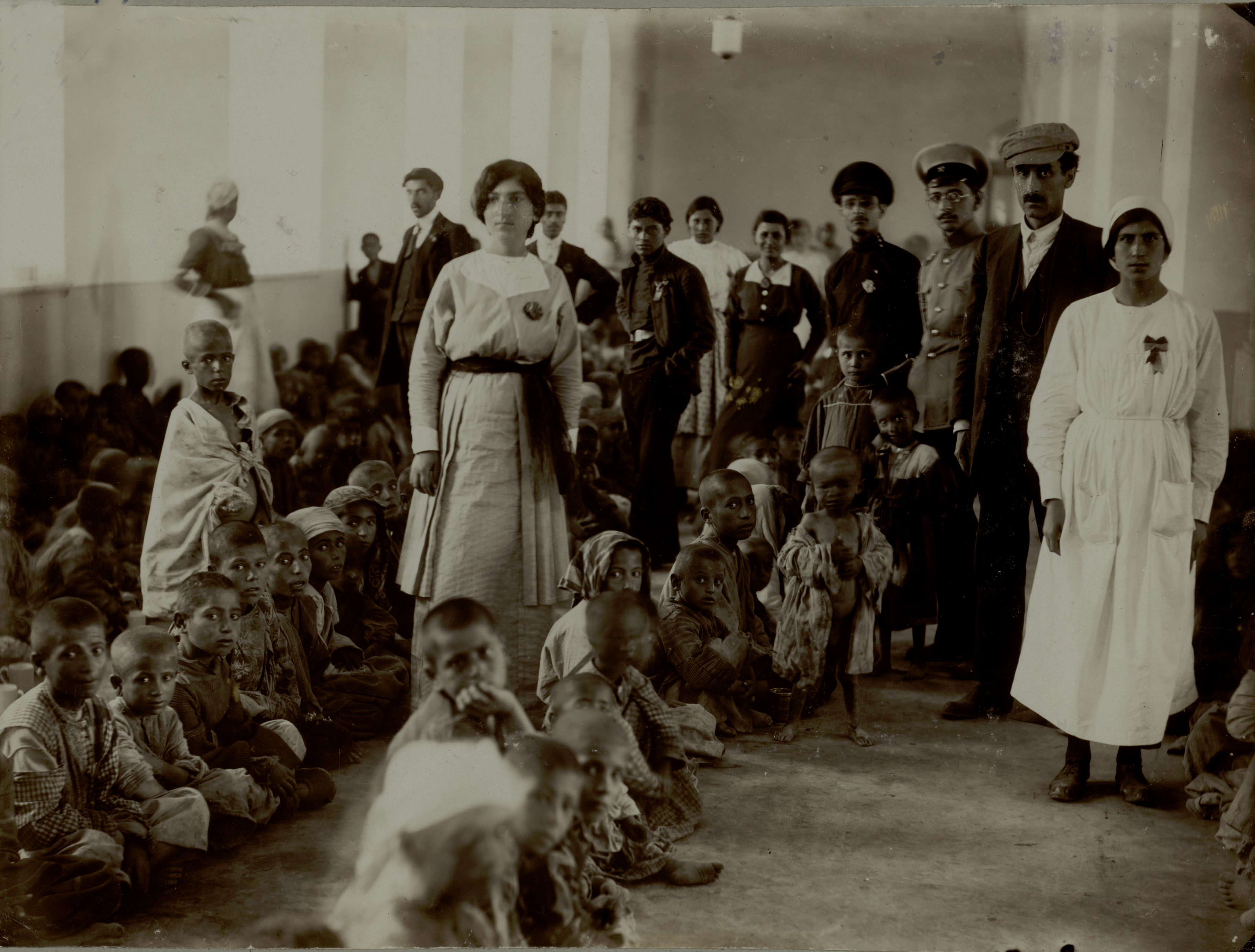
Orphans who have survived the Genocide, 1915
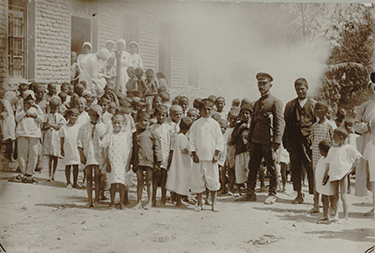
Orphans who have survived the Genocide, 1915
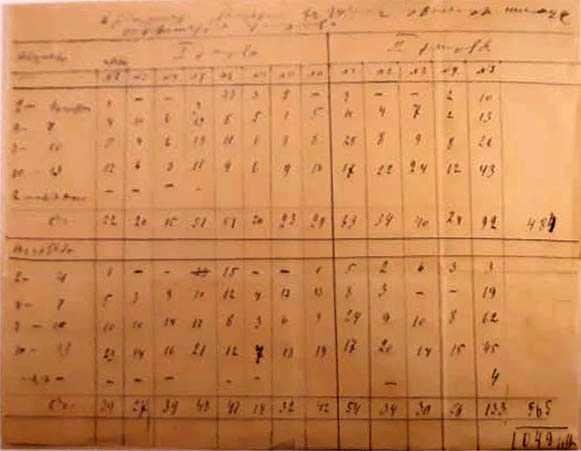
A list of healthy children of the orphanage found in the seminary building, composed by H. Tumanyan
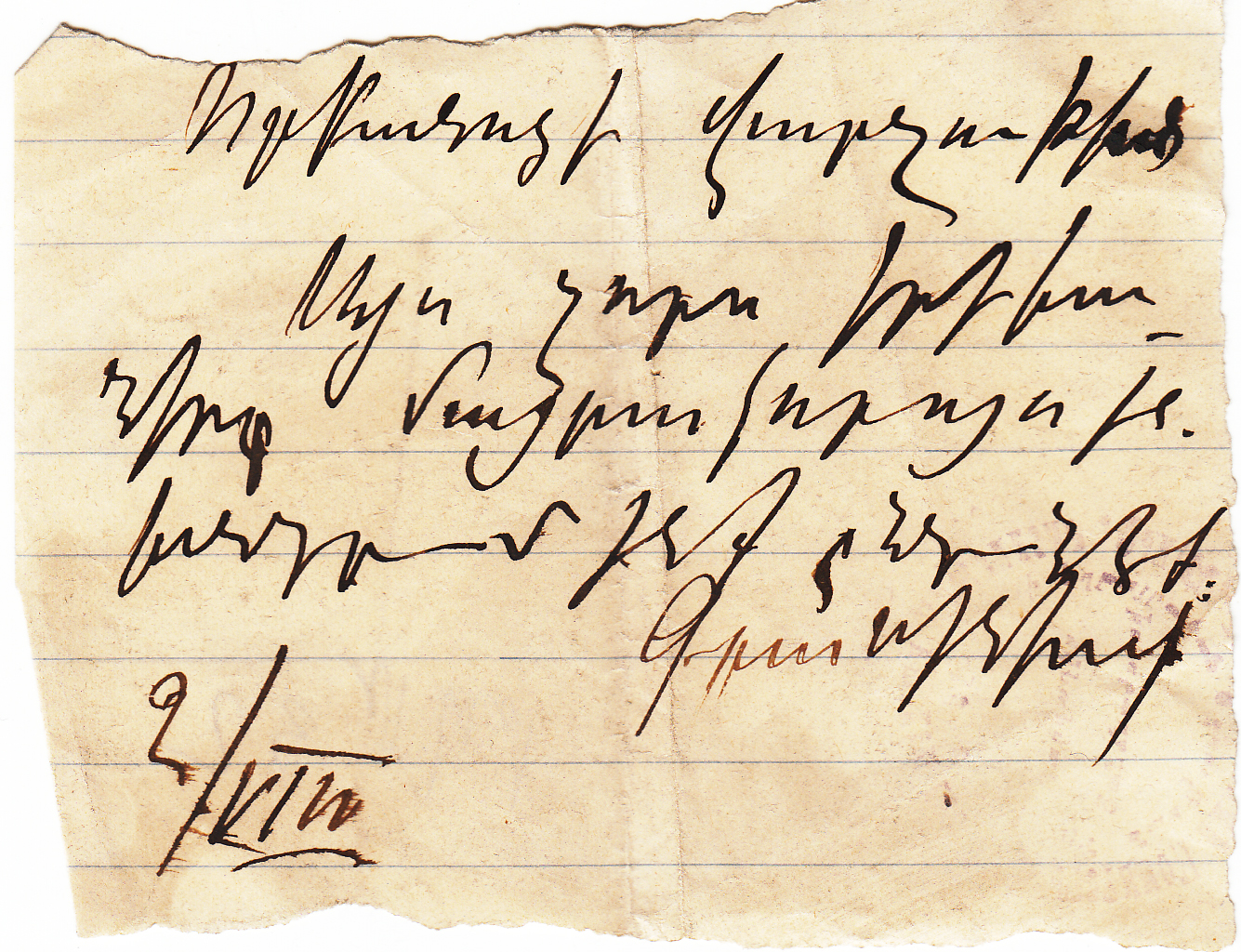
A petition addressed to Tumanyan, Echmiadzin, 1915
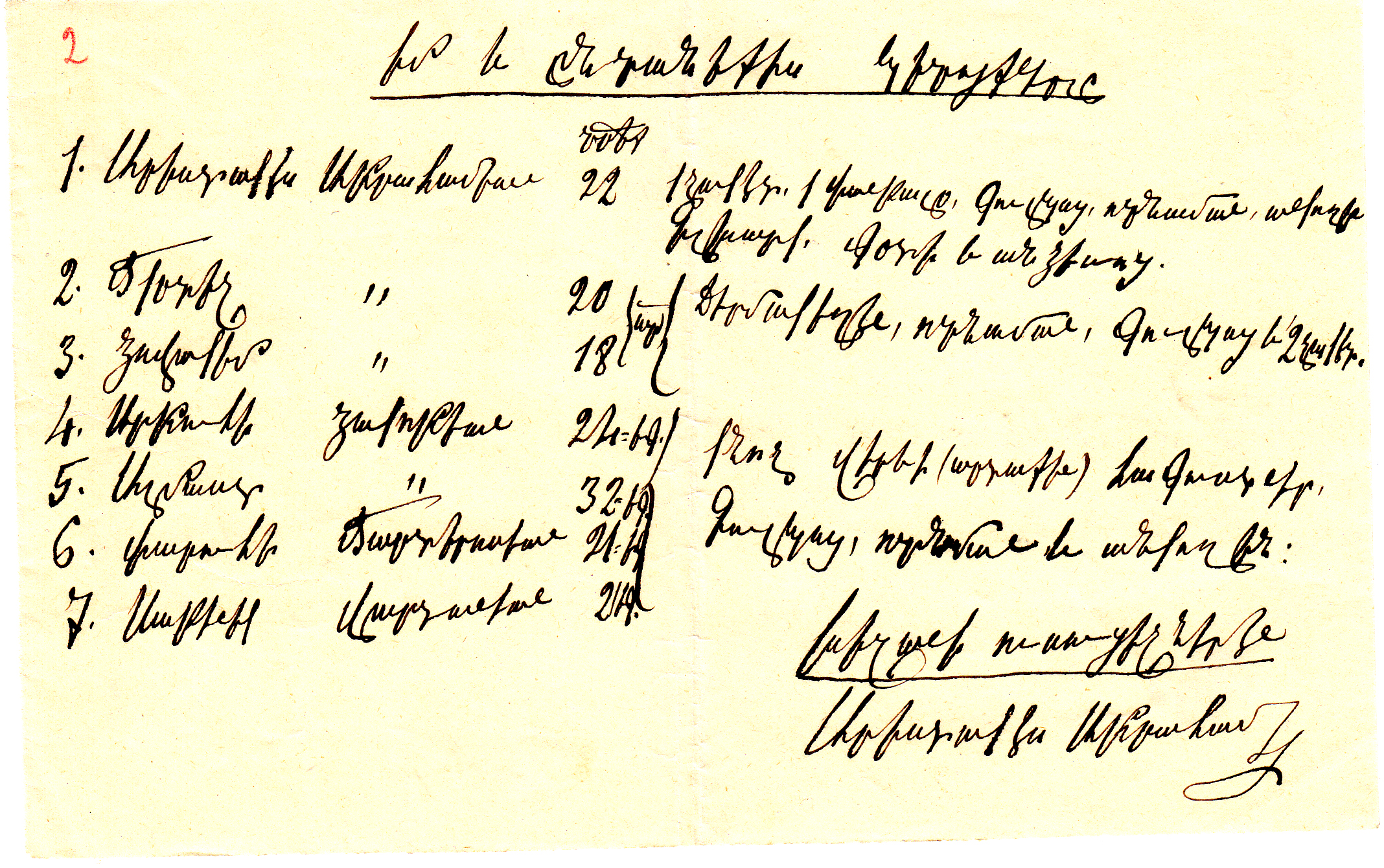
A petition addressed to Tumanyan on behalf of Aristakes Abrahamyan and the teachers, Echmadzin, 1915
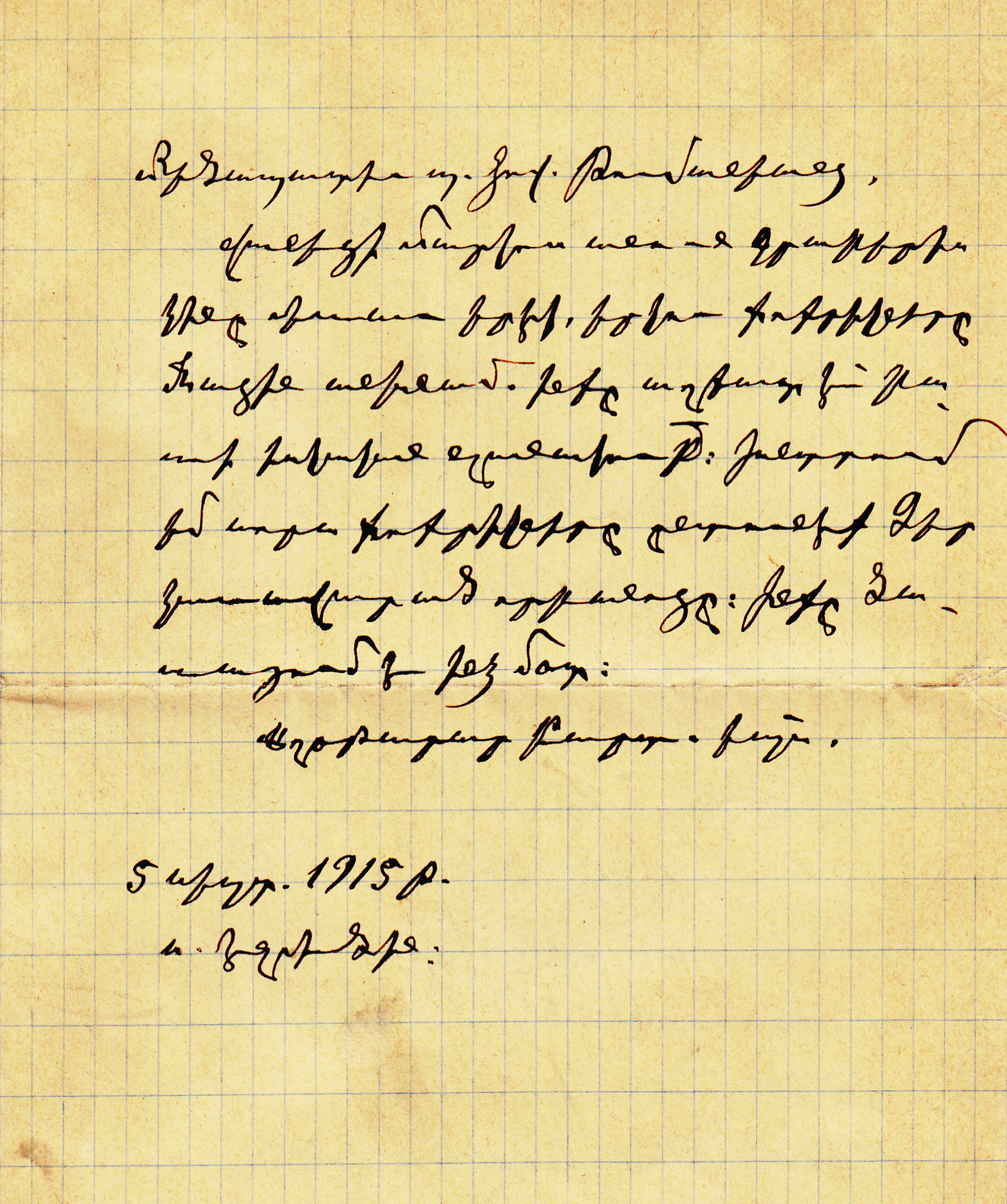
A petition addressed to Tumanyan, Echmiadzin, 1915
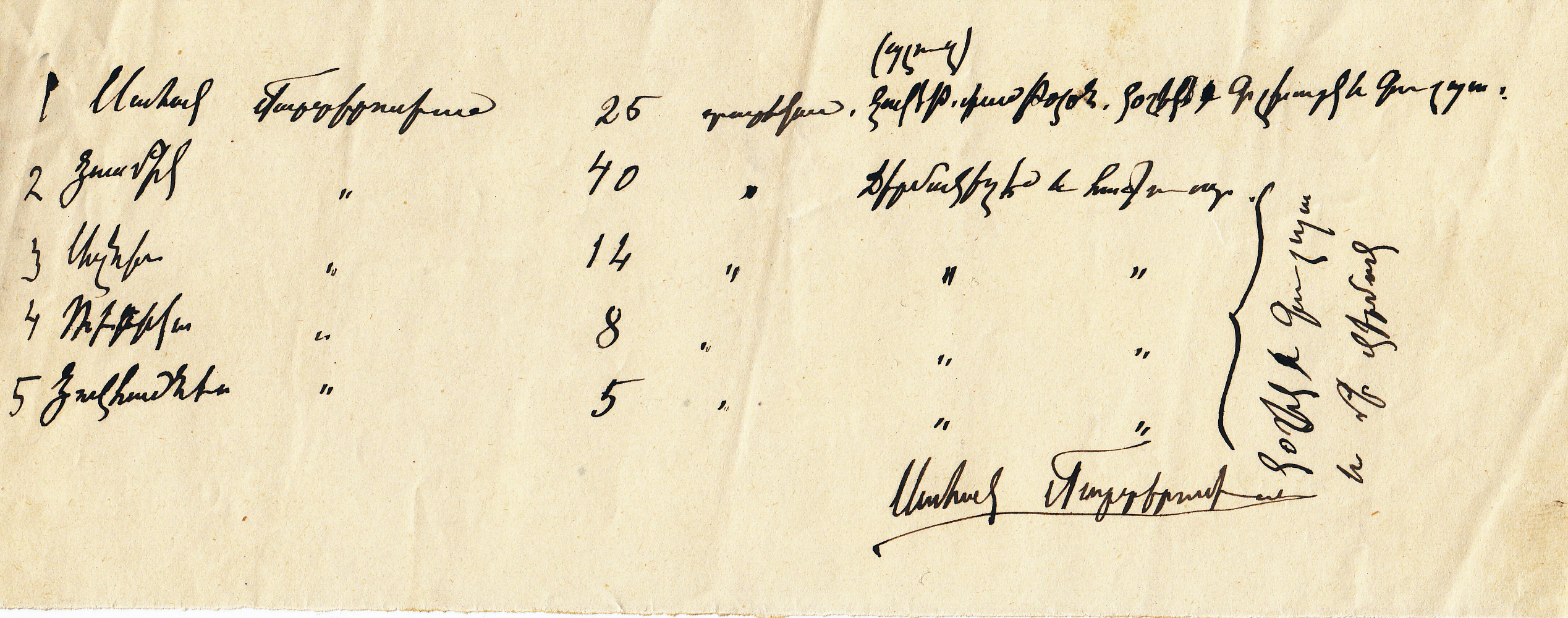
A petition addressed to Tumanyan on behalf of Sahak Martirosyan, Echmadzin, 1915
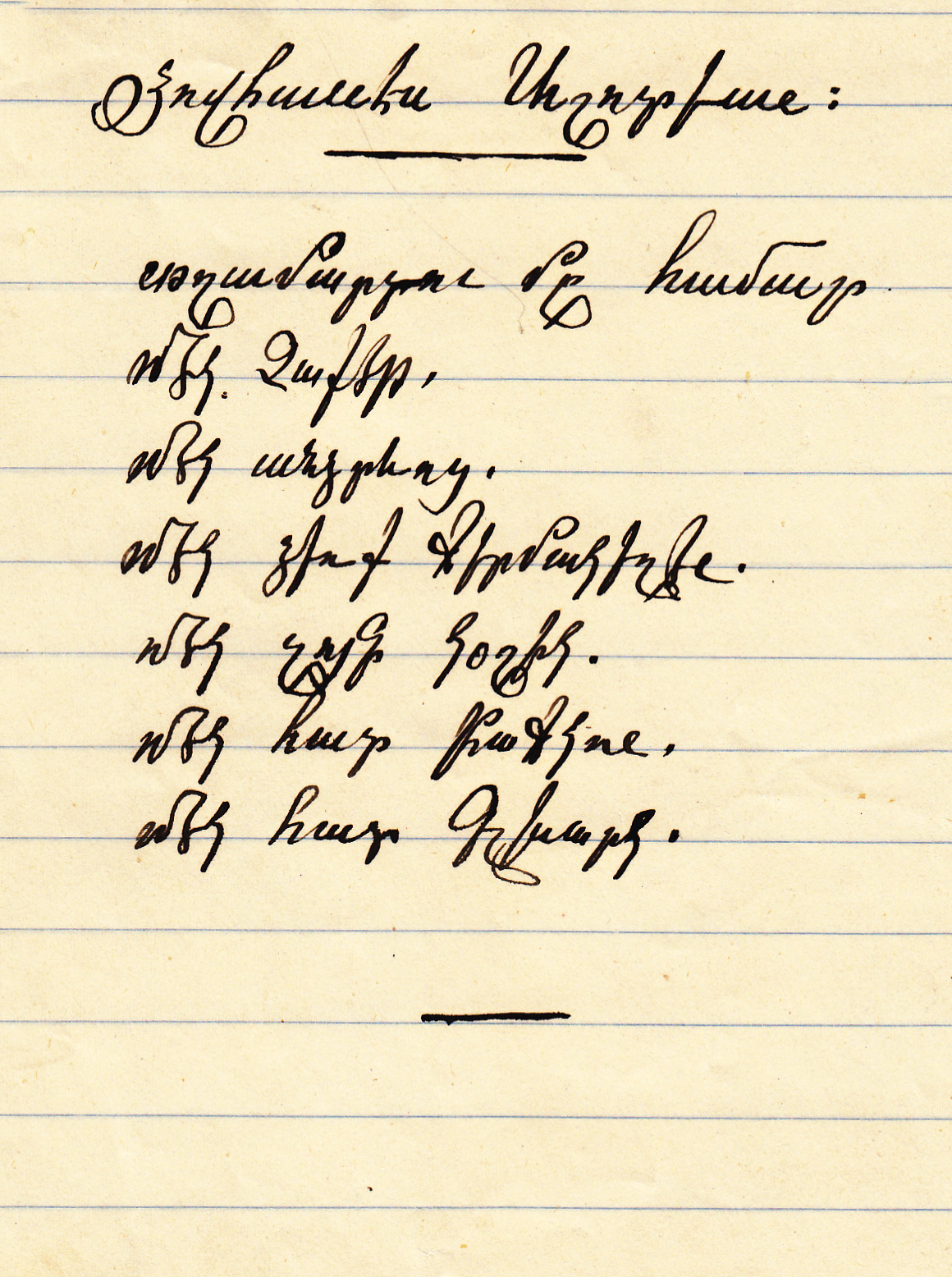
A petition addressed to Tumanyan, Echmiadzin, 1915
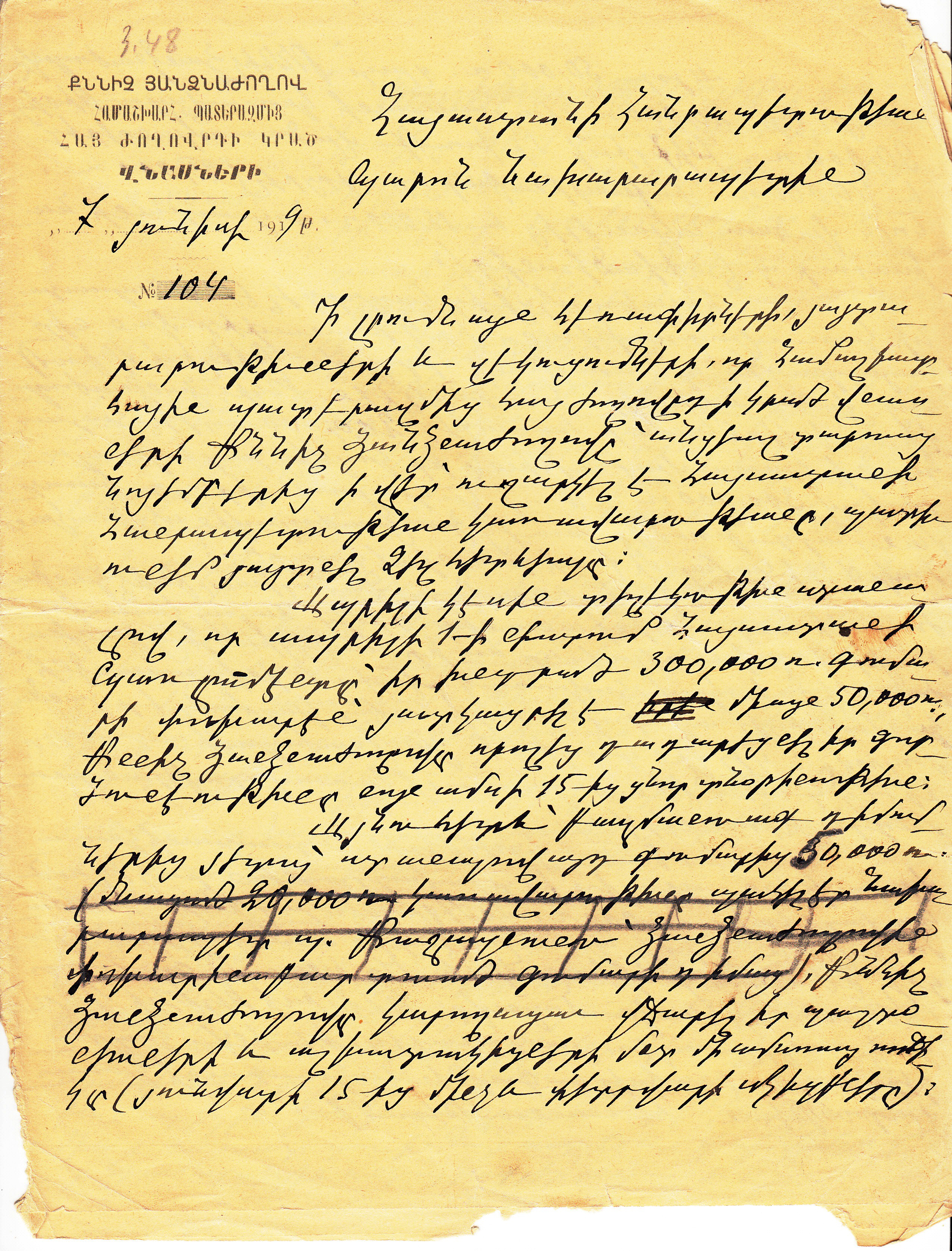
A document of “Investigative Committee on the loses of the Armenian People in World War I”, 1919
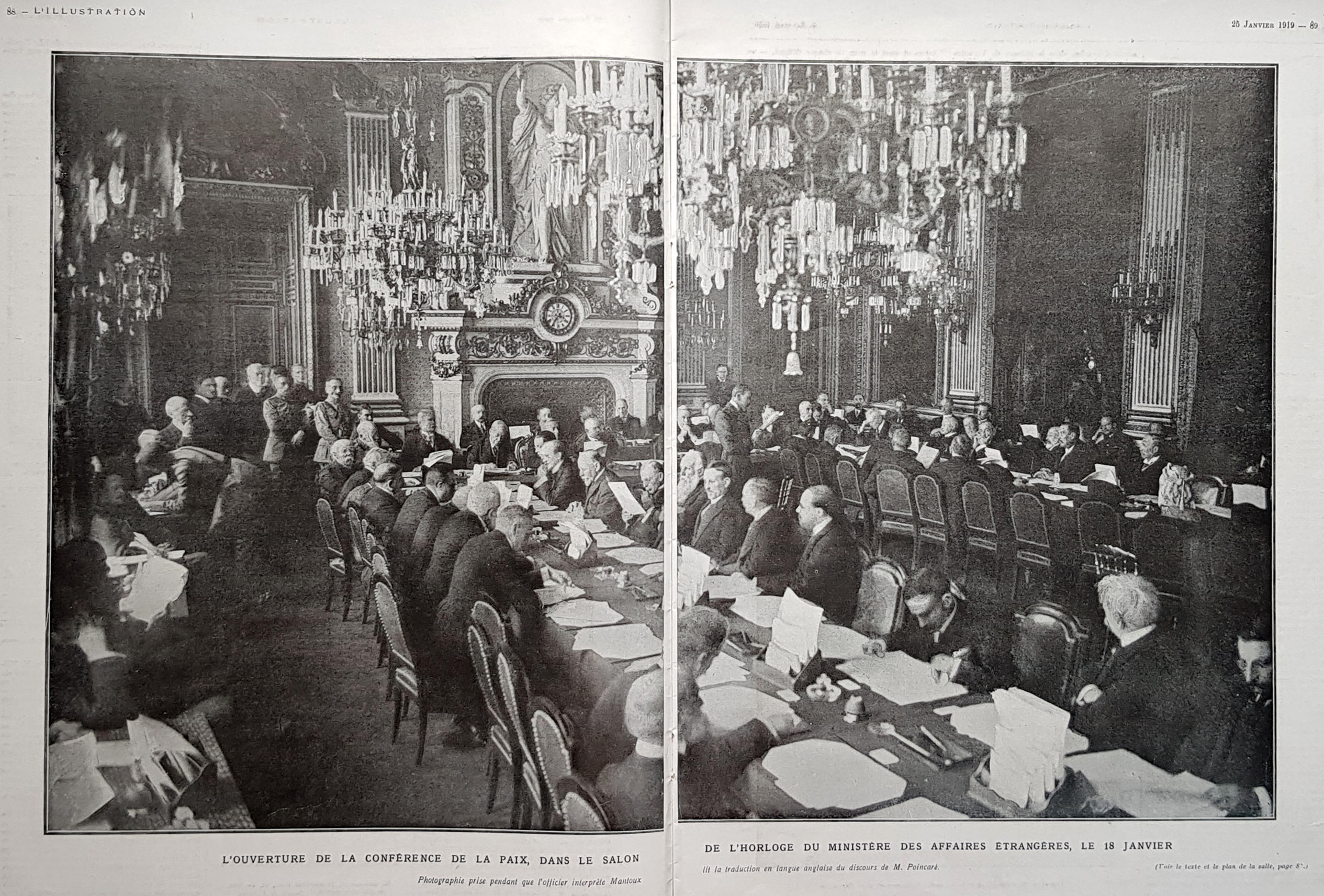
The opening of the Peace Conference at the Clock Hall of French Ministry of Foreign Affairs, January 1919
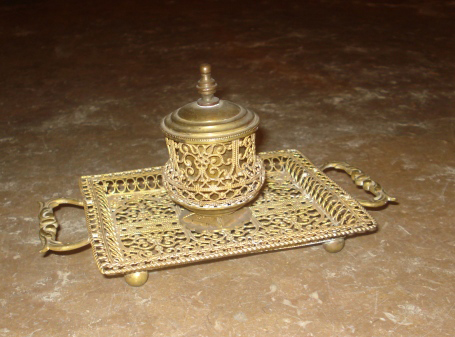
Tumanyan’s personal inkpot
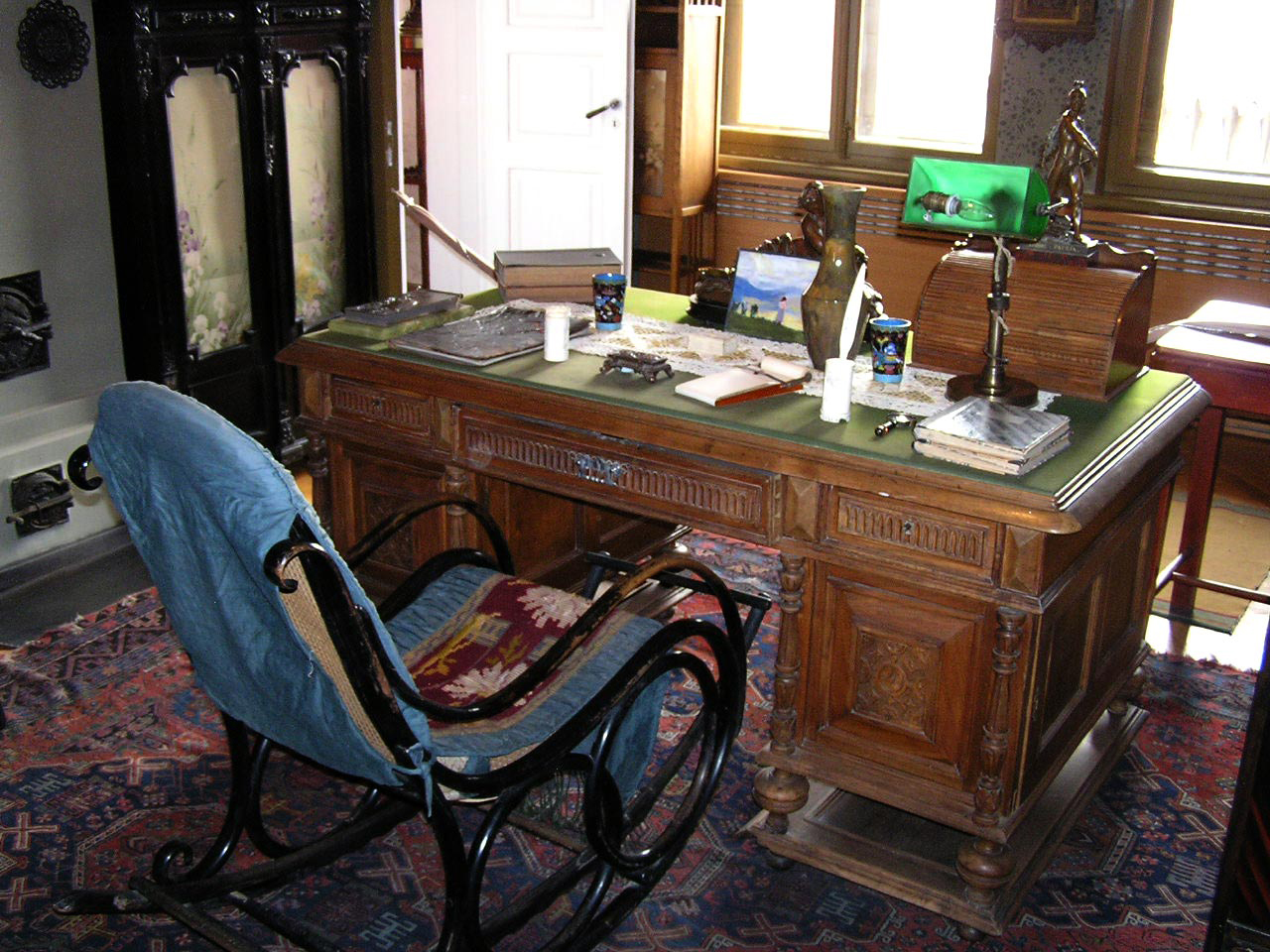
Tumanyan’s office
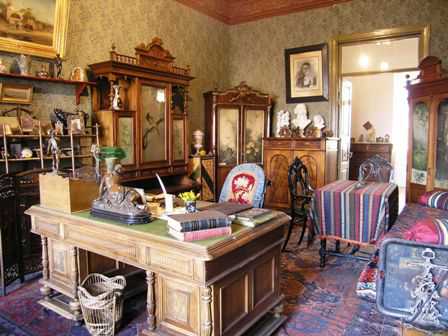
Tumanyan’s office
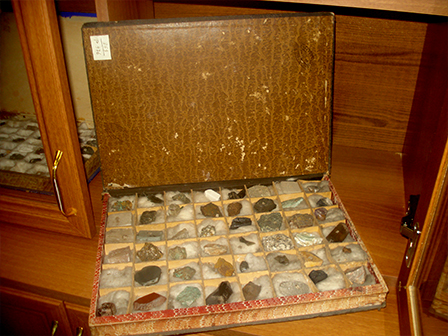
Tumanyan’s collections
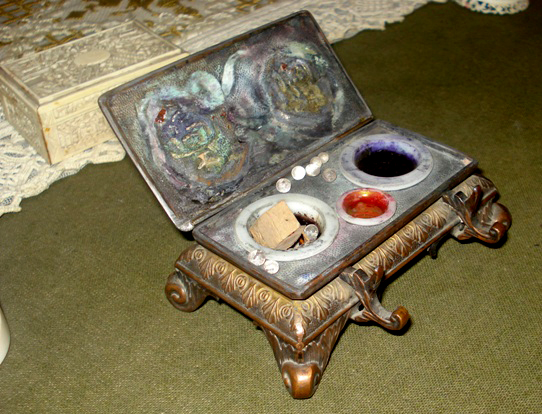
Tumanyan’s inkpot
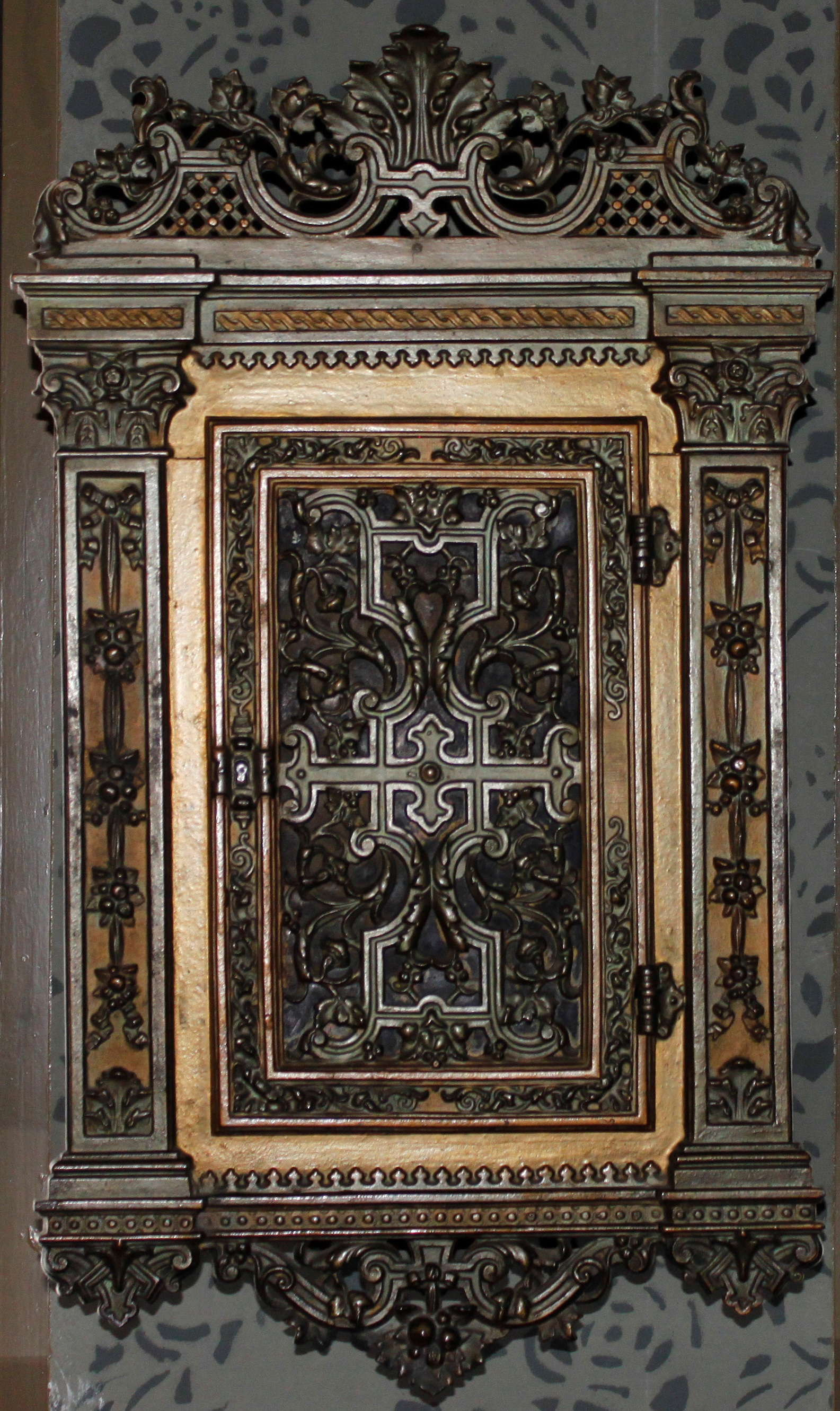
Tumanyan’s heart box
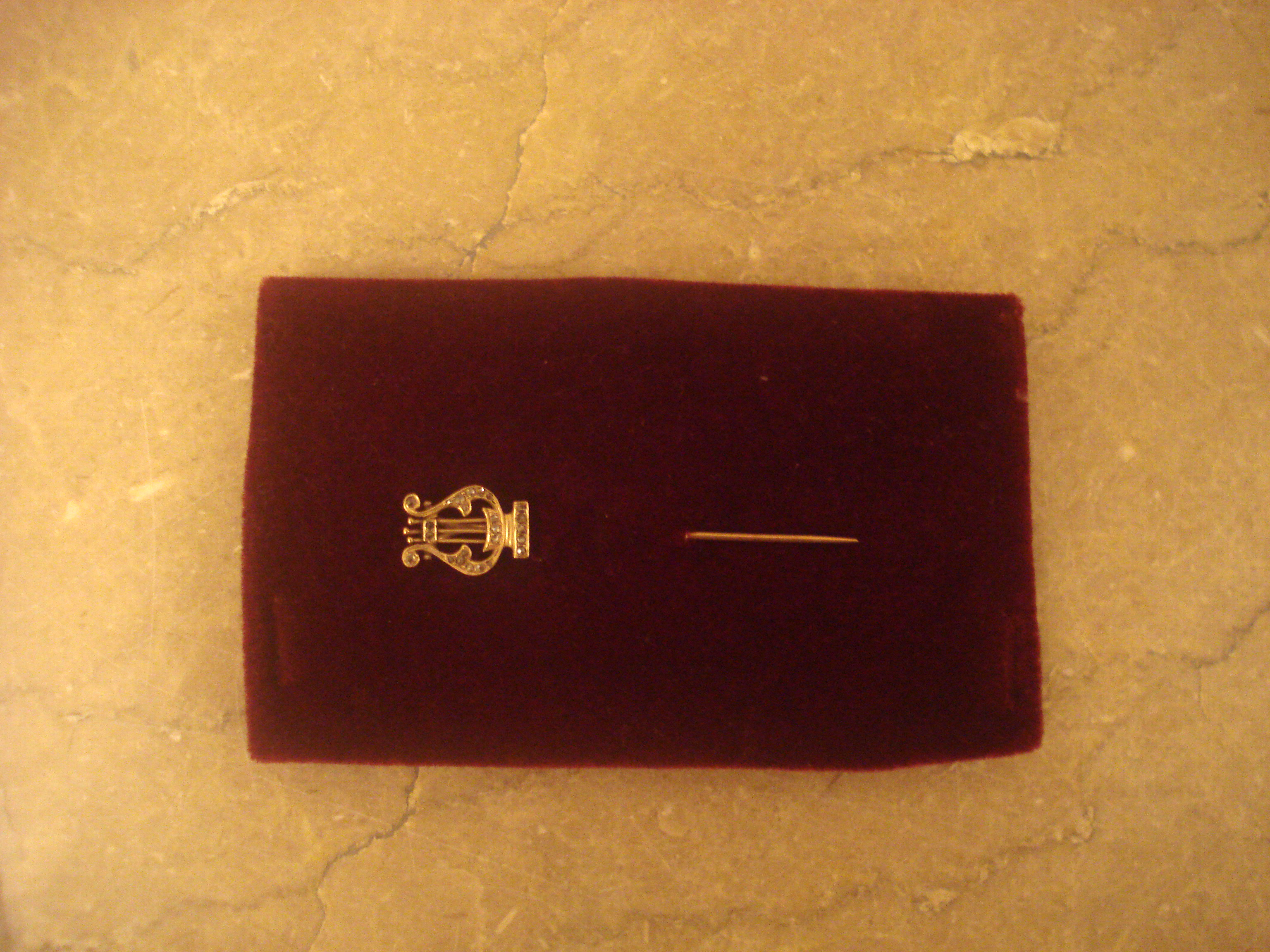
Tumanyan’s 50 anniversary chestnut
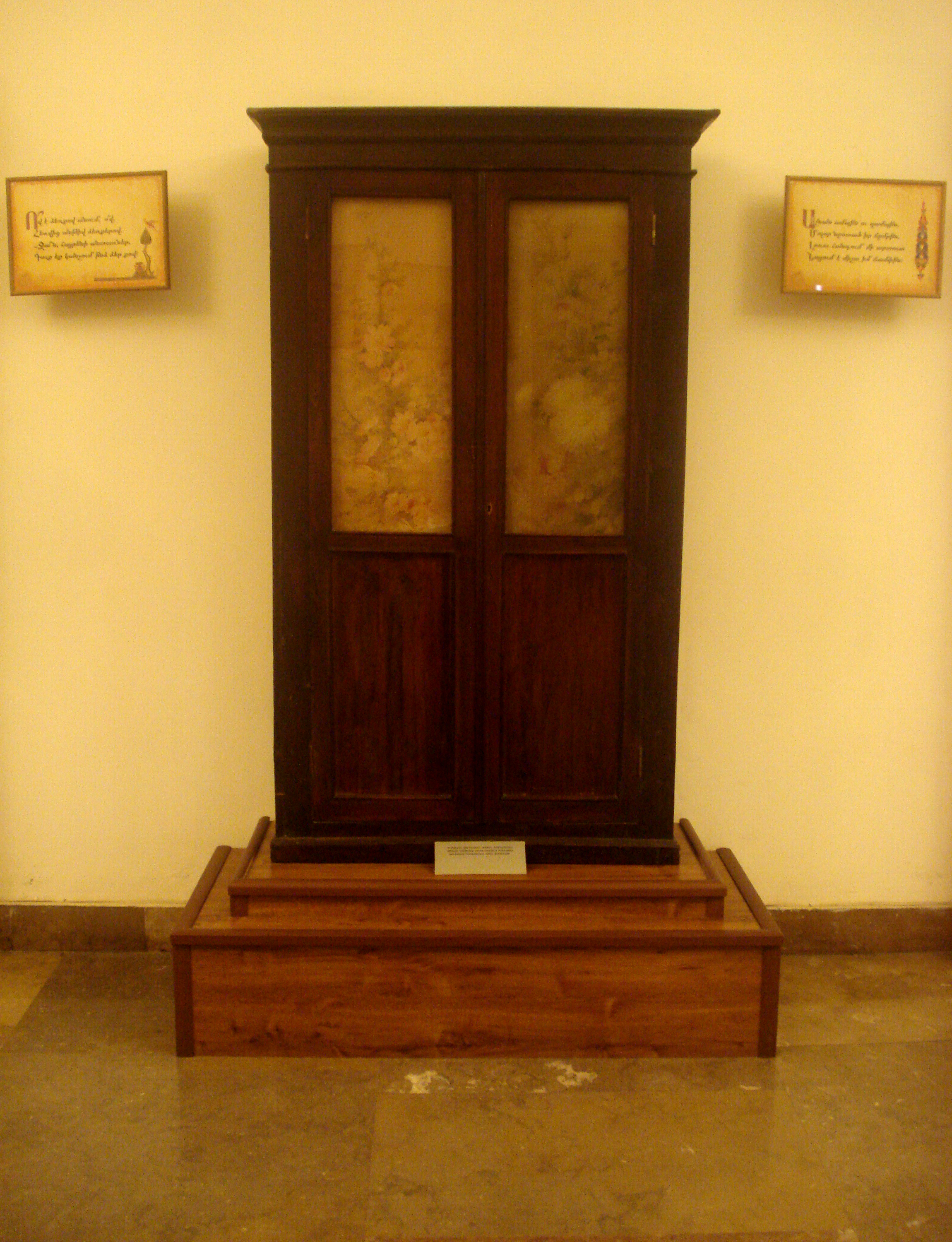
Tumanyan’s first bookstore

Tumanyan’s suit
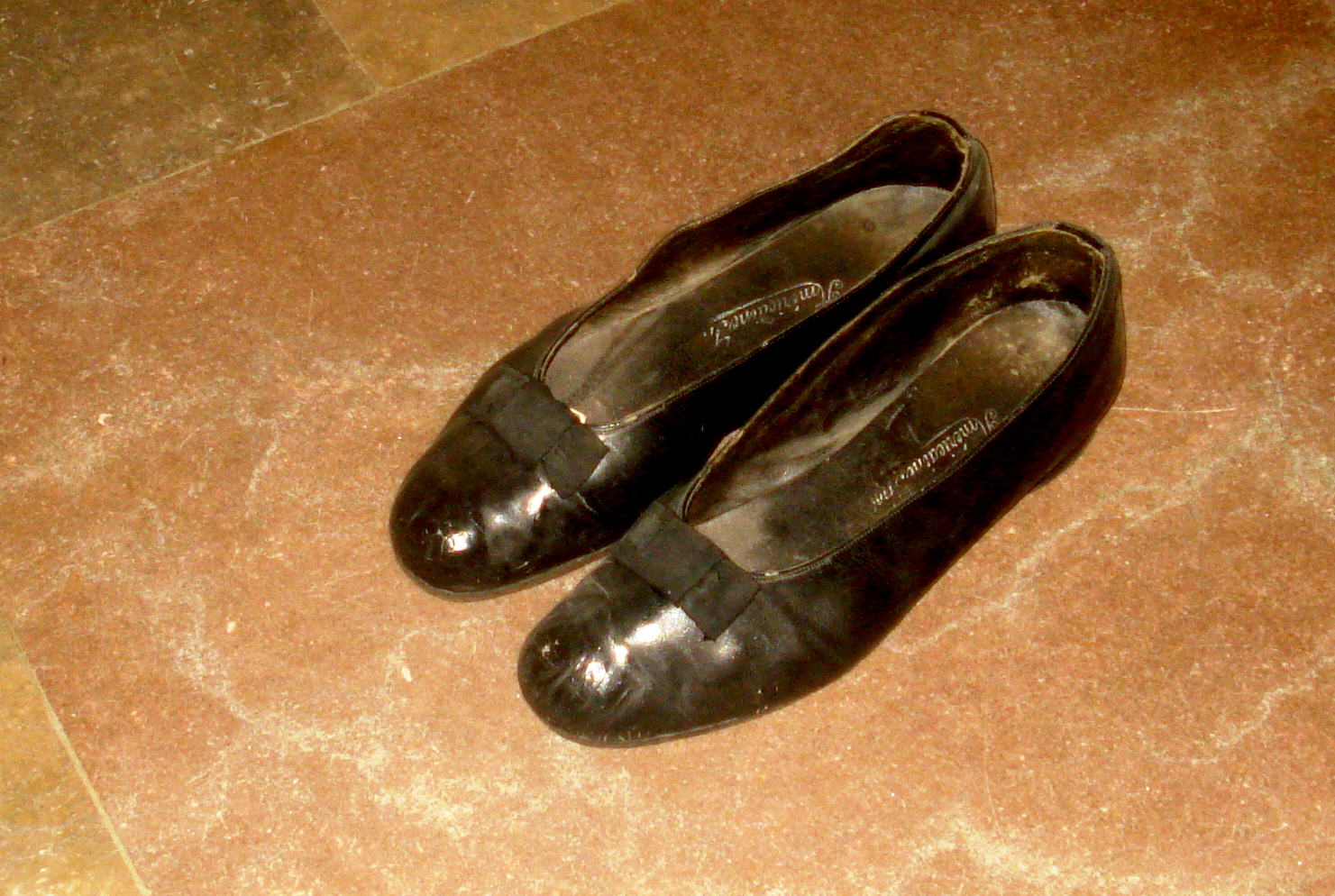
Tumanyan’s shoes
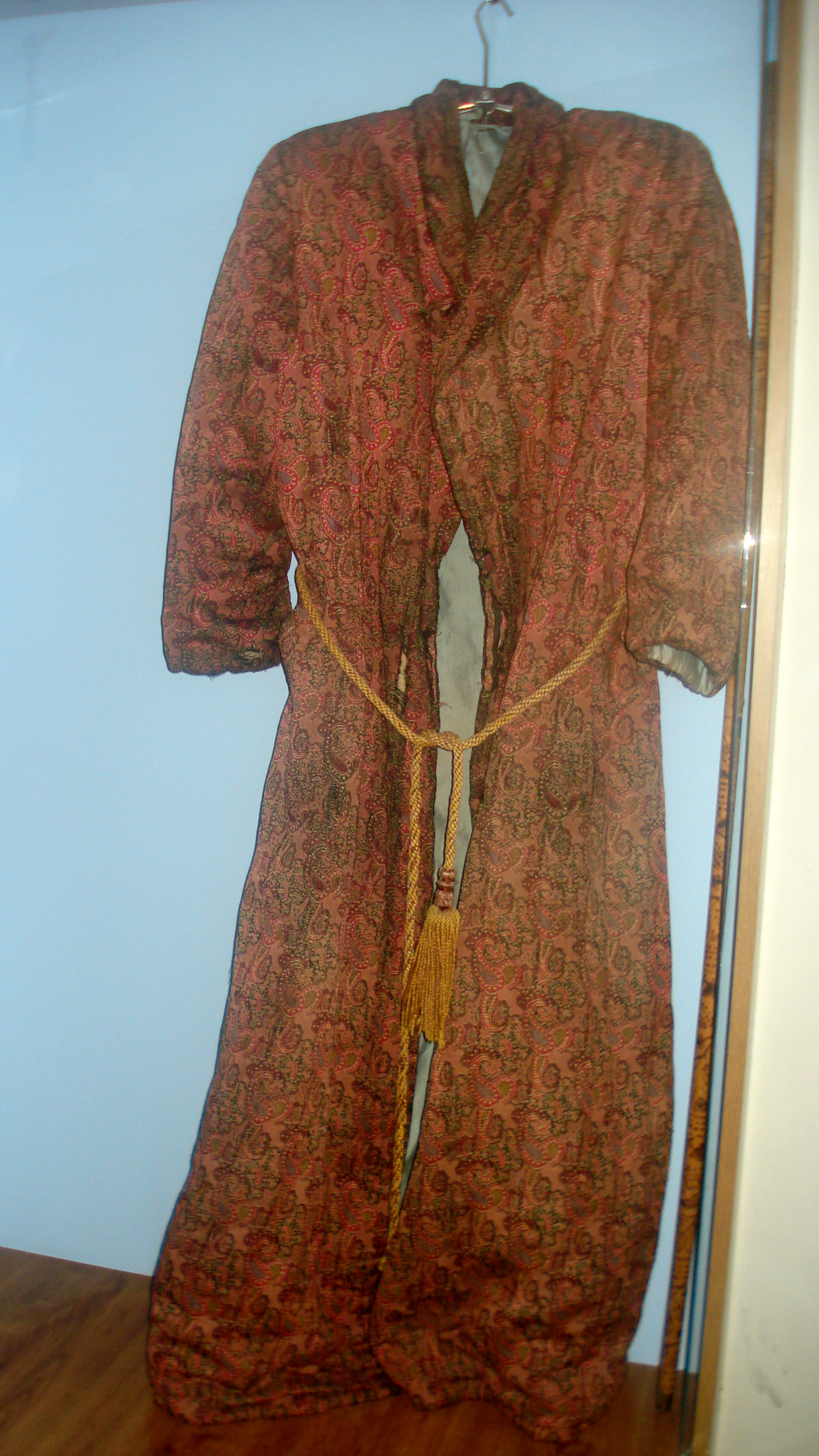
Tumanyan’s robe
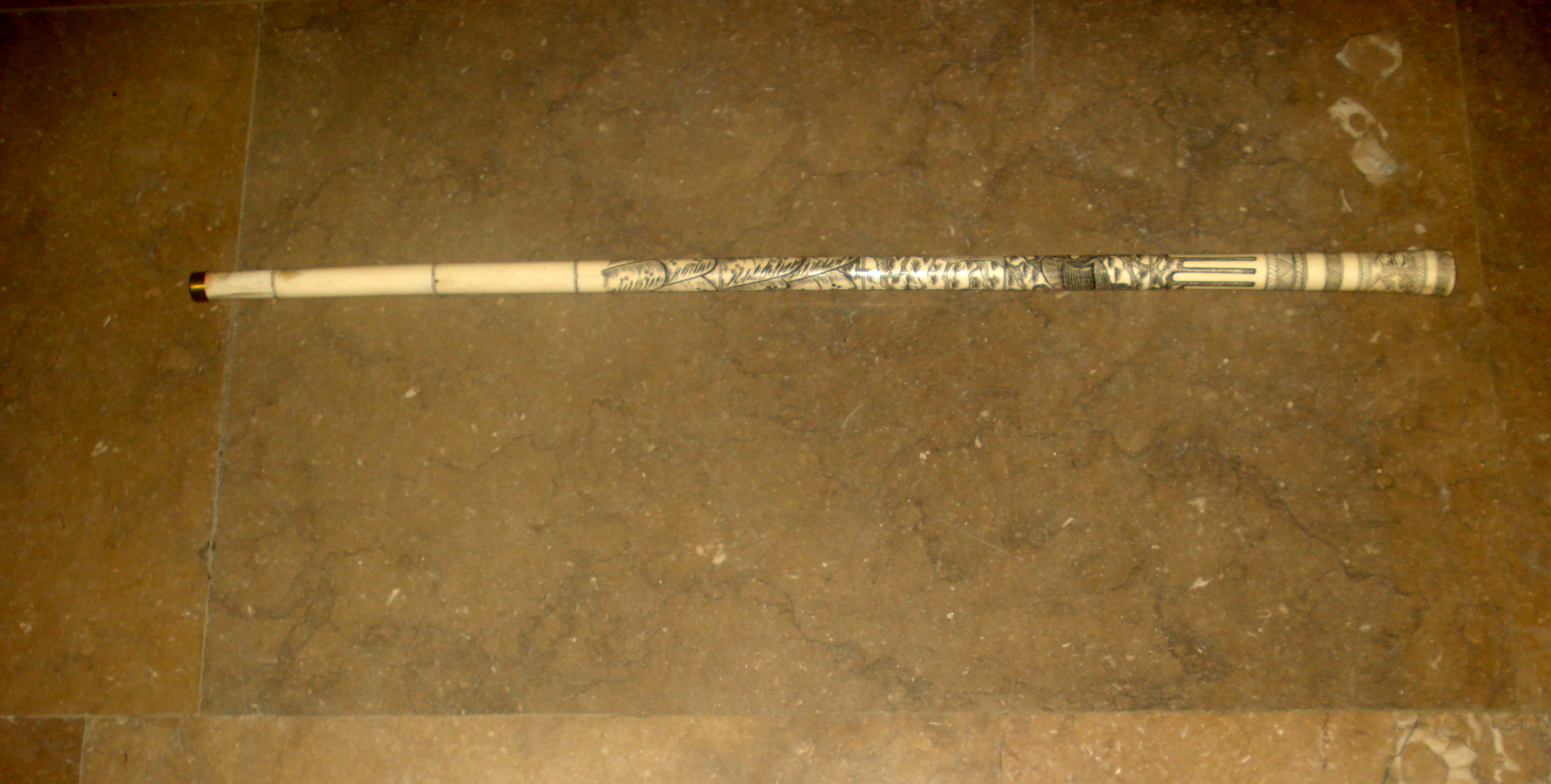
Tumanyan’s cane
© Armenian Genocide Museum-Institute





